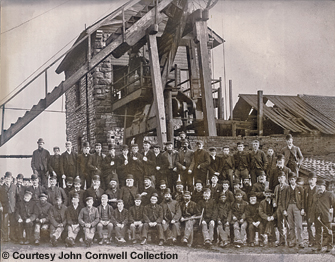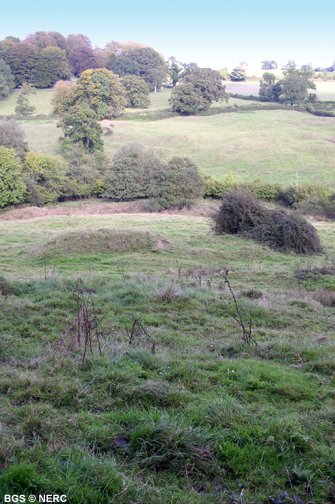
Minerals and mines
Introduction | History
of lead mining | History
of zinc mining | Lead
ore & mines
Zinc ore & mines | Iron
ore, ochre & mines | Coal mining
Coal mining history
Roman times
It is thought that the Romans mined coal in the Nettlebridge area, close to the Fosse Way. The third-century writer Solinus even makes a somewhat cryptic reference to the temple at Bath which suggests that coal was burned there.


Post Medieval times
Coal mining only really began in earnest during the 1600s. The first pits exploited surface outcrops, but by the 1790s, shafts up to 150 m deep were being sunk. The arrival of the railways in the mid to late 1800s caused some expansion, but most of the mines served local markets and could not compete with other coalfields. Demand for coal was at its peak during the early decades of the 20th century. Gradually demand fell for coal and the mines in the region closed one by one, especially after Nationalisation in 1947. The narrow seams, coupled with mine gas problems made production expensive, and many smaller pits were closed. The larger pits survived into the 1960s when reduced national demand together with competition from more economical coalfields led to the closure of the last remaining pit in 1973.
Medieval workings
There are numerous surface remains of medieval coal working in the Nettlebridge valley, especially around Benter where there is an extensive area of earthworks associated with early coal mining. Medieval coal working also exist in Harridge Wood where at least 52 bell pits (small shafts sunk along the surface outcrop of a coal seam) lie scattered through the wood, together with a number of deeper shafts and 16 adits (horizontal mines for access and drainage).
- Home
- Overview maps
- Locality
areas
- Cheddar Gorge
- Charterhouse
- Blackdown
- Burrington Combe
- Shipham & Rowberrow
- Crook Peak & Axbridge
- Banwell to Churchill
- Priddy
- Harptree & Smitham Hill
- Draycott & Westbury-sub-Mendip
- Wookey Hole & Ebbor Gorge
- Wells
- Great Elm & Vallis Vale
- Mells & the Wadbury Valley
- The Vobster area
- The Whatley area
- Torr Works & Asham Wood
- Beacon Hill
- Stoke St Michael & Oakhill
- Holwell & Nunney
- Shepton Mallet & Maesbury
- Gurney Slade & Emborough
- The Nettlebridge valley
- Geology
- Minerals and mines
- Quarrying
- Caves and karst
- Biodiversity
- Detailed site information
- Acknowledgements
- External links
- Search
- Site map